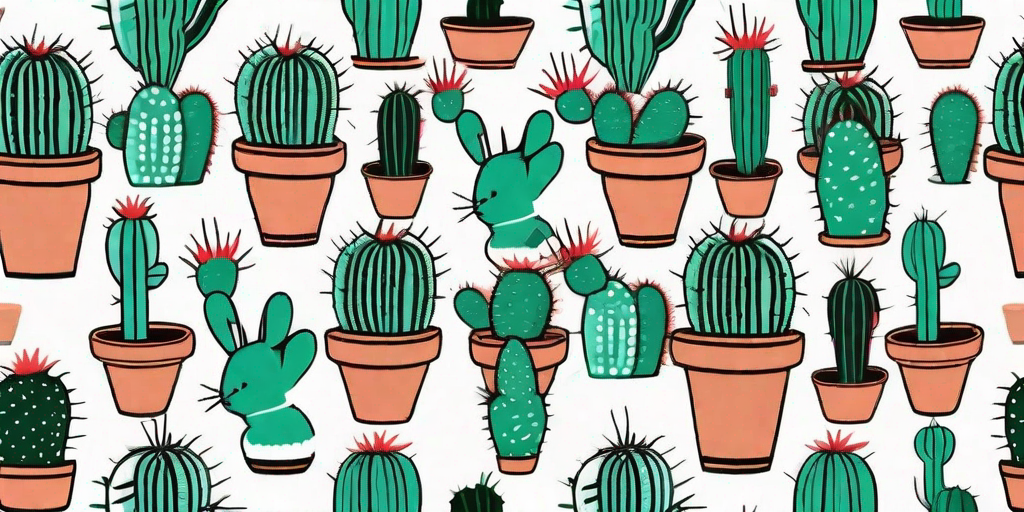
If you're a fan of all things prickly and adorable, you've probably already fallen in love with the bunny ear cactus. This charming little plant, also known as Opuntia microdasys, is a popular choice for indoor and outdoor gardens alike. But how much do you really know about this spiky sweetheart? Whether you're a seasoned cactus connoisseur or a budding botanist, this guide is here to help you get to grips with the bunny ear cactus.
Getting to Know the Bunny Ear Cactus
The Basics
Originally hailing from Mexico, the bunny ear cactus is a member of the Opuntia genus, which includes over 150 species of cacti. This particular species is known for its distinctive appearance, with pads that resemble a rabbit's ears. The plant is covered in tiny, hair-like spines known as glochids, which can be quite irritating if they get under your skin. So remember, while it might look soft and fluffy, this is one bunny you don't want to pet without gloves!
Despite their prickly nature, bunny ear cacti are surprisingly easy to care for. They're hardy plants that can tolerate a range of conditions, making them a great choice for novice gardeners. Plus, they can grow up to 3 feet tall, making them a striking addition to any garden or windowsill.
Fun Facts
Did you know that the bunny ear cactus can produce beautiful, bright yellow flowers? These blooms typically appear in late spring and early summer, adding a pop of color to your cactus collection. However, indoor plants may not flower as frequently as their outdoor counterparts, so don't be disheartened if your bunny ears are a little shy.
Another fun fact about the bunny ear cactus is that it's a champion at propagation. If a pad falls off, it can easily root and grow into a new plant. This means that if you're careful (and lucky), you might end up with a whole family of bunny ears from a single plant!
Caring for Your Bunny Ear Cactus
Light and Temperature
Like most cacti, the bunny ear cactus loves sunlight. It thrives in bright, indirect light, but can also tolerate direct sunlight for part of the day. However, too much direct sunlight can cause the plant to become sunburned, resulting in unsightly brown spots. So, while your bunny ears might enjoy a sunbathing session, make sure it's not out in the midday sun for too long.
When it comes to temperature, bunny ear cacti are pretty flexible. They can tolerate temperatures as low as 20°F (-6°C), but they prefer a warmer climate. Ideally, you should aim to keep your cactus in a room that's between 60°F (15°C) and 85°F (29°C).
Water and Soil
Watering your bunny ear cactus can be a bit of a balancing act. On one hand, these plants are desert dwellers, so they're used to dry conditions. On the other hand, they do need some water to survive. The key is to water your cactus thoroughly, then let the soil dry out completely before watering again. Overwatering can lead to root rot, which is a common killer of cacti.
As for soil, a well-draining cactus mix is your best bet. These mixes typically contain sand, perlite, and other materials that help prevent water from sitting around the roots. If you can't find a cactus mix, you can make your own by combining regular potting soil with coarse sand and perlite.
FAQs
Why are the pads on my bunny ear cactus turning yellow?
Yellow pads can be a sign of overwatering. If the soil is too wet, the roots can become waterlogged and start to rot, which can cause the pads to turn yellow. To fix this, let the soil dry out completely before watering again, and make sure your pot has good drainage.
Can I grow a bunny ear cactus from a pad?
Absolutely! In fact, propagation is one of the easiest ways to get more bunny ear cacti. Simply take a healthy pad, let it dry out for a few days to form a callus, then plant it in well-draining soil. With a bit of patience and care, you should see new growth in a few weeks.
Conclusion
So there you have it, your comprehensive guide to the prickly yet adorable bunny ear cactus. Whether you're a seasoned cactus collector or a newbie to the world of succulents, this charming plant is sure to make a great addition to your collection. Just remember to handle with care, and your bunny ears will reward you with years of growth and maybe even a few flowers!















